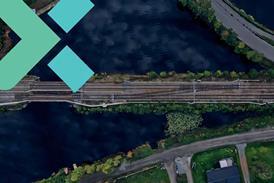Close menu
- Home
-
News
- Back to parent navigation item
- News
- Traction and rolling stock
- Passenger
- High speed
- Freight
- Infrastructure
- Policy
- Technology
- Ticketing
- Business
- Research, training and skills
- Accessibility and inclusion
- People
- Urban rail news
- Suburban and commuter rail
- Metro
- Light rail and tram
- Monorail and peoplemover
- Regions
- InnoTrans
- In depth
- Events
- Data
- Maps
- Tenders & Jobs
- Sponsored content
- Insights
CPK: Revolutionizing transport connectivity in Central and Eastern Europe
Sponsored by CPK2023-04-28T11:41:00

The Centralny Port Komunikacyjny (CPK) is a comprehensive multimodal transport project based on three main pillars: an airport hub, a new rail network, and an airport city. As a strategic infrastructure investment, CPK will integrate air, rail, and road transport, connecting nearly 180 million inhabitants of Central and Eastern Europe (CEE).
Already have an account? LOG IN
To continue…
You’ve reached your limit of content for the month














